Neck Frame by Andrew McConnell could be worn like "a structural second skin"
Designer Andrew Lee McConnell drew on his own experience of suffering a neck injury when developing this concept for a wearable protective brace that could help prevent whiplash and other impact-related injuries (+ slideshow).
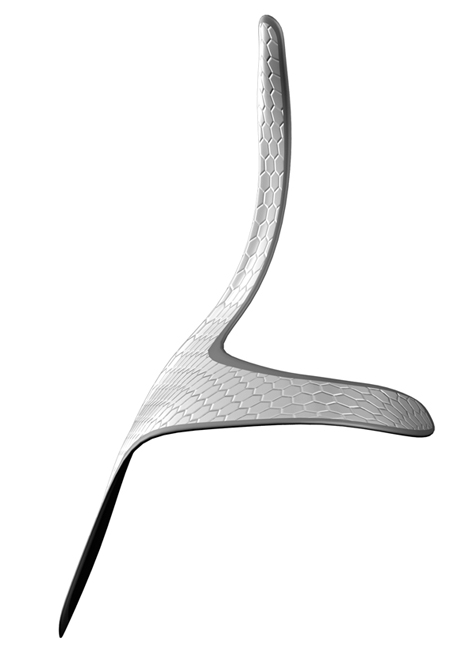
Having suffered a serious head and neck injury in a sporting collision last year, Vancouver-based designer Andrew McConnell began looking into ways of preventing or minimising the effect of similar impacts suffered by athletes in sports such as American football or rugby.
Neck Frame is designed to absorb excessive force inflicted on the spine and attaches to the back and neck in a similar way to elastic sports tape. Layers of the strong and flexible carbon-based material, graphene, would provide rigidity that the designer claimed could enable it to "act like a structural second skin".
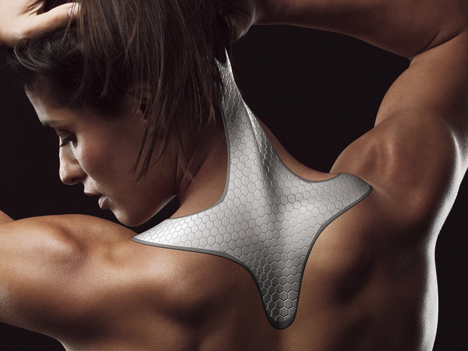
Graphene is a lightweight material made from pure carbon that is arranged in a layer just one atom thick. It is extremely strong and lightweight – properties that the designer wanted to exploit in a minimal product that remains flexible enough to allow unrestricted movement.

"After researching and learning about the material's characteristics, I saw the potential for a product made from graphene that would not just move with the body but also reinforce it," McConnell told Dezeen.
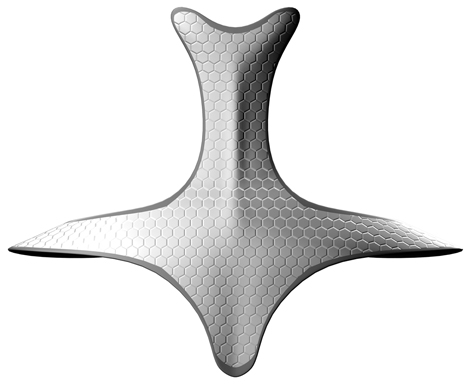
The shape of the Neck Frame wraps over the shoulders and up the spine to the base of the skull, with a ridge of woven graphene running along the spine providing the main support.
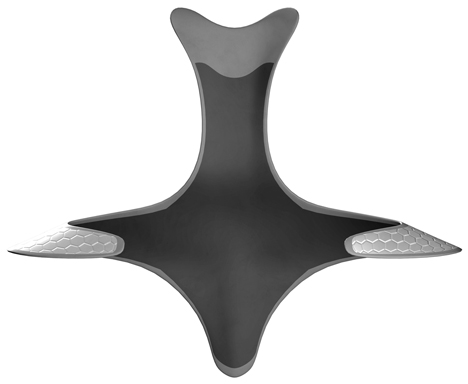
Its unobtrusive dimensions and simple form are intended to encourage athletes to wear the brace without feeling that it is conspicuous or overtly medical.
"Aesthetics are very important with products that are wearable and visible to others, including sports equipment," said the designer. "My goal with Neck Frame was to create something aesthetically pleasing while avoiding any resemblance to conventional medical neck braces."
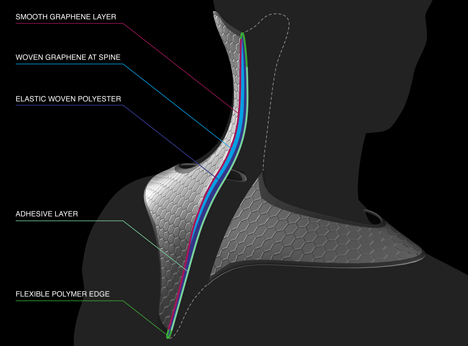
Several flexible synthetic materials would be combined in layers to create the Neck Frame. The surface contacting the skin would be made from an elastic woven polymer that would stick to the body using an adhesive.
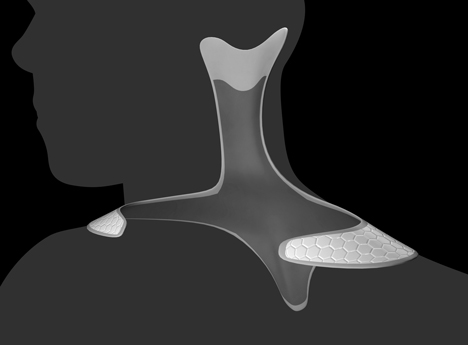
An outer graphene layer with a hexagonal grooved surface would increase the product's flexibility and reference the hexagonal structure of the material, while the edges would be trimmed with a strip of a flexible polymer.
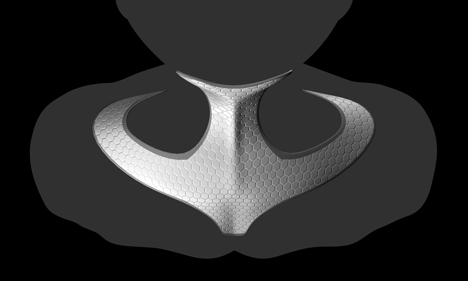
The designer added that variations of the product could be developed to support and strengthen other vulnerable joints, such as the wrists, knees and ankles.
"I hope this concept sparks interest in wearable neck protection and helps people see the potential in thin and flexible joint reinforcement products," said McConnell.
"With advancements in material technology I feel we're due a revolution in how we conceive of, design and construct protective athletic equipment. I envision a future where similar products will be wrapped around athletes' bodies, providing protection from all kinds of injuries."
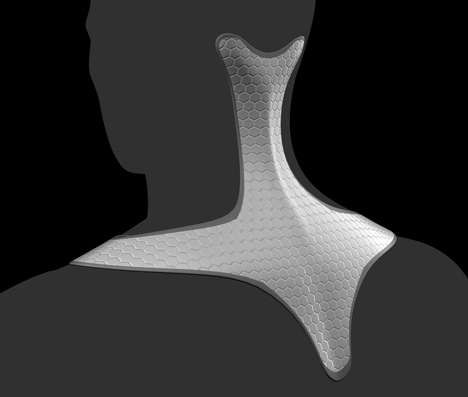
McConnell plans to conduct further analysis into the properties of graphene and how it could best be applied to meet the specific requirements of the product before creating a working prototype.